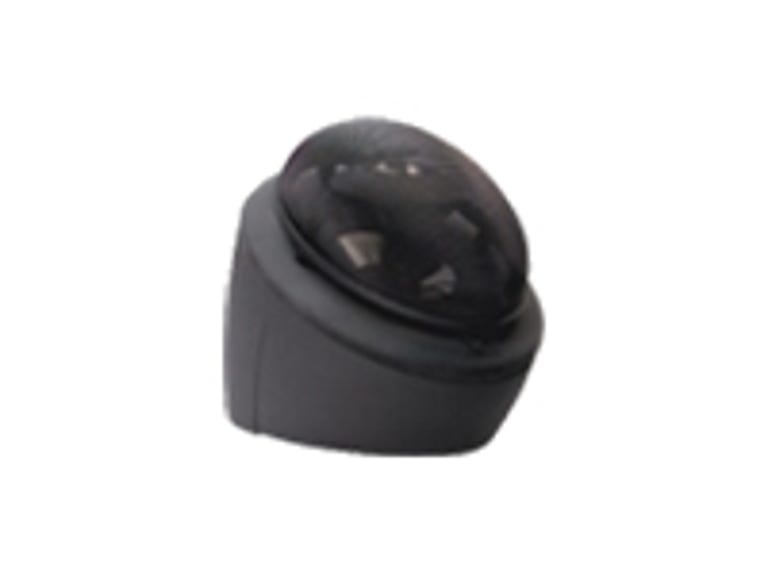Conventional box speakers direct sound straight ahead, but the Mirage Omnisat set has an omnidirectional design, meaning it radiates sound in a 360-degree spherical pattern. They sure don't look or sound like any speakers you've heard before! Such radical engineering tends to be expensive, and while Omnisats aren't exactly cheap, they're more affordable than say, a plasma TV. A complete Omnisat 5.1 system, with Mirage's Omni S10 subwoofer, runs $1,750 at full retail, and the individual speakers list for $250 apiece. Viewed from above, the Omnisat is oval shaped; the shape not only looks cool, it also minimizes the speakers' resonance for a cleaner sound. The satellite's ABS plastic cabinet felt remarkably solid and inert, and a rubberized coating contributes to the design's luxurious aura. A bubble-shaped metal mesh grille protects the drivers. Manufactured in Canada, Omnisats are available in black, platinum, platinum/black, and white finishes.
Mirage's swiveling Omnimount wall bracket ($49 per pair, available in black or white) was designed with easy installation and mounting flexibility in mind. Oh, and here's a new twist: invert the Omnisats, and you can mount these little guys upside-down on the ceiling; they'll project down toward the listening position. That might be just the ticket for your rear surround Omnisats. The speakers are generally not fussy about placement, but we preferred the sound of floor-stand-mounted Omnisats. Audiophile buyers should go with Mirage's 30-inch-tall stand ($150 a pair, available in platinum/black or white)--it features a cast metal base and a hollow tubular support shaft to conceal unsightly wires.
The Good
The Bad
The Bottom Line
The Omnisat is the largest of Mirage's omnidirectional satellites. You can save a bit of dough by opting for the Omnisat Micro, or even more with the smaller-still Nanosat. Omni technology is also available in the Omni Series range of tower speakers, monitors, and a center and surround speakers.
The solid metal binding posts are beautifully made and offer a solid connection with banana jacks, spades, or stripped bare-wire ends.
The 10-inch, 200-watt Omni S10 subwoofer completes the system.
The Omnisats' sound is more open and less boxy than that of conventional box speakers, and once you're fully acclimated to Omnisats, box speakers may sound downright claustrophobic. Phish's Billy Breathes CD's warm sound was well served by the little Omnisats, without a trace of small-speaker dynamic range compression or the sort of recessed midrange sound that sucks the life out of acoustic guitars. The band's rich vocal harmonies soared as they do on high-end speakers.On pop wizard M. Ward's Transfiguration of Vincent CD, we noted that the bass drum on the right channel sounded remarkably solid and realistic. The remarkable thing was that most of the deep bass was actually coming from the Omni S10 subwoofer, way over on the left side of our room!
Thanks in large part to the Omnisat's unflinching resolution, we reveled in every sonic detail on the Unspeakable DVD, a psychothriller of the most bizarre kind. The thumping heartbeats and dazzling surround effects populating the massive sound field generated by the five Omnisats was truly astonishing; the gaps between the front and surround Ominsats were minimal compared to what you can achieve with direct-radiating satellites. The Omnisats and the matching Omni S10 worked together to deliver a visceral punch we all too rarely experience from similarly compact satellite/subwoofer systems. The Mirage system can play pretty darn loud and can fill large (500 square foot) home theaters with ease.
During the closing credits on the Hidalgo DVD, the score weds classic big western music with the film's Middle Eastern themes. The orchestral sound had a breadth and scope that defied the petite dimensions of the satellites. If you're interested, we'd recommend an audition so that you can experience the Omnisats' incredible sound firsthand.



